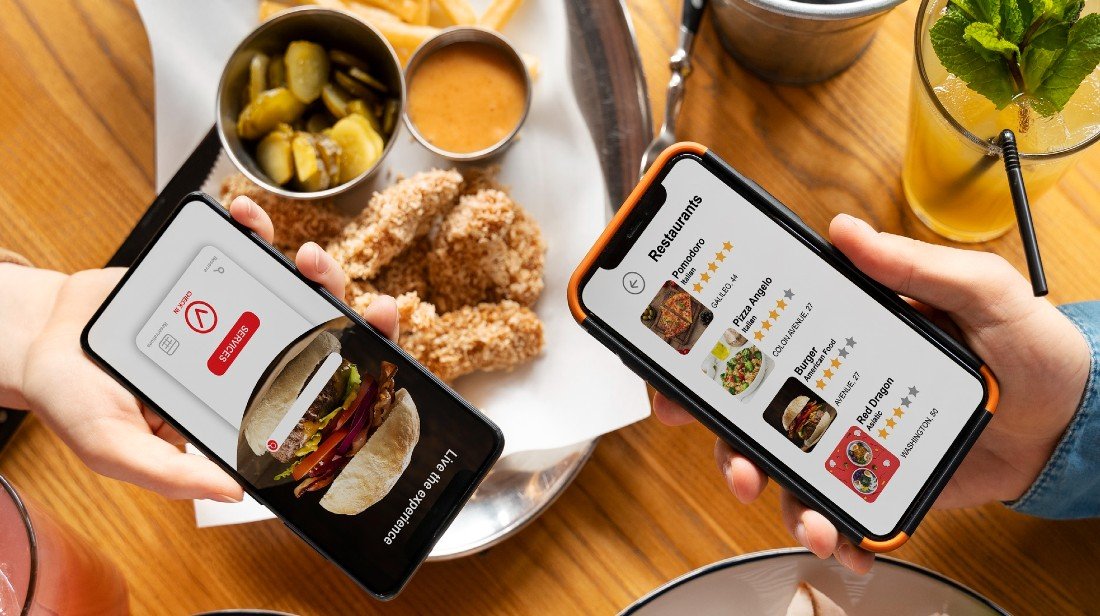
In digitally connected world, your brand is being discussed, reviewed, and shared over multiple platforms, whether you are aware of it or not. Active brand monitoring is the key to remaining ahead of these conversations, handling your online reputation, and capturing growth opportunities. The brand monitoring service sector is likely to grow from US$2.88B in 2025 to US$6.18B by 2034, with 8.82% CAGR (2025-2034). From social media platforms and online review sites to news articles and forum portals, tracking brand presence is vital for recurring success. If you are a business holder, marketing director, or brand strategist, understanding and applying brand monitoring can significantly improve customer trust, lift visibility, and provide competitive edge.
What is Brand Monitoring?
Brand monitoring is the method to track and analyze mentions of your brand, products, or services over multiple online platforms. These covers observing what consumers, competitors, influencers, and the media are stating about your brand in real-time.
With brand monitoring, companies can gather data to measure public sentiments, respond on negative feedback quickly, engross with their audience, and make informed business decisions. Brand monitoring help creating effective strategies and preserve the brand image. As per the research, more than 92% consumers stop buying from or returning to business if they encountered with any negative remark regarding product. With the brand monitoring, companies can deal effectively with complaints promptly which led to increase in customer loyalty. By adopting brand monitoring companies can keep eye on marketing performance, build long-lasting client relations, and easily find out what their competitors are following.
Why Is Brand Monitoring Important?
Brand monitoring goes far beyond just tracking mentions, this process is about shielding your reputation, understanding your customers, and having a strategic superiority in the digital marketplace. Here’s why brand monitoring is a serious investment for businesses of all sizes
Brand Reputation Management
In the era where people are connected via digital word-of-mouth, public perception is the whole thing. A single negative tweet, deceptive article, or low star review can go viral within a few minutes and harm years of hard-earned credibility.
Brand monitoring allows you to:
- Notice negative mentions in real time
- Respond quickly to complaints or misrepresentation
- Magnify positive feedback and reviews
- Manage PR crises before they intensify
According to Review Trackers, 94% of consumers say an online review has influenced them to dodge a business. Active brand monitoring aids you turn a potential reputation crisis into a customer loyalty success.
Customer Insights
Every customer communication, mention, or comment is a source of actionable feedback. Brand monitoring tools let you tap into real-time consumer sentiment to uncover:
- Customer satisfaction leanings
- Pain points in your service or product
- Regional or demographic behavior swings
- Language and tone customers use around your brand
By knowing what your consumers really wants, you can improve your product offerings, personalize marketing, and increase engagement. HubSpot found that more than 60% of consumers expect businesses to recognize their requirements and expectations. With brand monitoring, you can meet and surpass those expectations more successfully.
Competitive Advantage
Monitoring your brand alone is not sufficient. You need to track your competitors too. With brand monitoring tools, you can:
- Compare your brand performance in contrast to top competitors
- Identify competitor weaknesses based on user reaction
- Recognize new market trends or available opportunities
- Get insights related to competitor pricing, messaging, and positioning
A learning by Crayon revealed that 90% of businesses say their sector is more competitive than ever. Competitive brand monitoring helps you stay ahead in this race.
Risk Control and Mitigation
Modern brand threats can come from many directions such as data breaches, product failures, compliance violations, or even false news. Monitoring brand helps you:
- Sense misinformation or malicious content early
- Monitor fraud, phishing, or impersonation attempts
- Track media criticism or sudden spikes in negative sentiment
- Confirm messaging line up with legal and ethical standards
Businesses that don’t monitor brand risk can suffer financial harm. In fact, 80% of consumers lose trust in a brand after just one poor experience – PwC.
Longstanding Business Growth
Brand monitoring isn’t just a defensive play; it is a growth strategy. By understanding what people say about your brand, product, and industry over time, you can:
- Build stronger customer relations
- Nurture community and trust around your brand
- Optimize campaigns based on real-world perception
- Strengthen brand equity and positioning in the market
Forrester research illustrate that strong brands outperform the market by 73%, and constant monitoring ensures you are endlessly strengthening your brand.
What Are the Key Areas of Brand Monitoring?
Effective brand monitoring means doing more than just tracking your brand name. It includes listening to conversations, skimming digital channels, and analyzing patterns that effect how your brand is perceived. Let’s have a look at core areas every business must monitor to keep a healthy brand reputation and gain a competitive advancement.
Social Media Platforms
In the digital era, social platforms such as Facebook, Instagram, X, LinkedIn, TikTok, and YouTube are become great medium where your consumers like to shares their opinions, experiences, complaints, and endorsements in real-time. These networks act as a strong indicators of brand sentiment and customer loyalty.
Why it matters:
- Spot viral trends and hashtag mentions
- Track influencer and UGC (User Generated Content) mentions
- Respond swiftly to customer feedback or crises
- Engage with your community and lift brand advocacy
Stat: Over 71% of customers who have a good social media experience with a brand are likely to recommend it to others. (Source: Forbes)
Online Reviews and Ratings
Review sharing platforms like GMB, Trustpilot, Yelp, and other industry related review sites play a important role in inducing consumer decisions. Customers trust actual reviews more rather believing in what brand says.
Why it matters:
- Positive reviews develop credibility and trust
- Negative reviews give insights into areas requiring improvement
- Responses to reviews show transparency and customer care
- Star ratings directly impact your SEO and local search rankings
Stat: 93% of customers say online reviews impact their buying decisions, and 72% won’t take any action until they read reviews – BrightLocal
News Portals and Blogs
Tracking what the media and bloggers are stating about your brand assist you measure your public image and find new opportunities for PR or content collaboration. This is very essential to manage crisis situations and build brand authority.
Why it is important:
- Find mentions in press releases, articles, and blogs
- React to news narratives or misinformation
- Identify thought leadership or backlink building opportunities
- Track how product launches or announcements are performing
Forums and Online Communities
Platforms like Reddit, Quora, Stack Exchange, ProductHunt, and other industry related forums are the places where detailed and unbiased discussions took place. These communications are rich in insights explaining about what your audience is really thinking and demanding.
Why it required:
- Find real pain points and feature demands
- Discover questions customers have regarding your products or services
- Monitor brand mentions in core and highly intent communities
- Build trust by engaging in conversations
Stat: Reddit alone sees 450+ million monthly active users. This makes it a treasure of organic feedback and market signals.
Competitor Mentions
Brand monitoring includes keeping a pulse on your direct and indirect competitors. By analyzing what people say about their products or provided services, you can benchmark your performance, find gaps, and gain inspiration.
Why it matters:
- Compare brand sentiment side by side
- Make analysis of competitor strengths and weaknesses
- Monitor product launches, campaigns, and customer responses
- Find opportunities to outshine your core competitors in key sectors
Industry Trends and Keywords
Staying competitive in your business area needs an understanding of market swings, emerging topics, and keywords your target visitors are searching for. Brand monitoring can track these in real time to improve content and product planning.
Why it matters:
- Match your messaging policy with current and future demand
- Spot popular keywords and trending topics for SEO and content development
- Establish your brand as an industry thought leader
- Find partnership, PR, or campaign opportunities quickly
Stat: Brands that aggressively track and stay updated with industry trends are more likely to outperform competitors in lasting growth.
Challenges in Implementing Brand Monitoring
Data Overload
With the huge amount of online data, it can be devastating to filter relevant information.
Real Time Monitoring
Staying updated in real time needs vigorous tools and constant attention. Automatic alerts and dashboards are essentials for this.
Sentiment Analysis Complexity
Tools may misread sarcasm, irony, or way of saying in user comments. This can result in erroneous sentiment analysis.
Privacy and Ethical Concerns
Tracking user discussion must be done with responsibility and by respecting data privacy laws.
Cross-Platform Integration
Integrating data from various platforms within one unified dashboard can be technically challenging.
Resource Constraints
Small businesses may short with the resources or expertise to implement a comprehensive brand monitoring system
Steps to Implement Successful Brand Monitoring
Choose the Correct Brand Monitoring Tools
There is multiple software available such as Brand24, Mention, Google Alerts, Hootsuite, or Sprout Social which help to automate and streamline the process.
Set Up Alerts and Keywords
Use the brand name, product names, CEO names, tag lines, and industry related keywords to set alerts.
Frequently Collect and Analyze the Data
Acquire insights related to consumer sentiment, volume of mentions, engagement levels, and influencer activity to make trends and pattern analysis.
Build a Response Plan
Create plan for handling various types of feedback, from complaints to compliments. Confirm evenness in tone and message.
Discuss Results with Team
Share findings with departments including marketing, sales, product development, and customer service to line up strategies.
Constantly Upgrade the Strategy
Often review the performance of your brand monitoring performance and alter strategies based on new goals, channels, and technologies.
Final Thoughts
Brand monitoring is no longer a bonus but essential in a digital first world. It allows proactive reputation management, uncovers invaluable customer insights, and assist to stay agile in a highly competitive marketplace. Businesses that invest in smart and constant brand monitoring process not only protect their brand value but also reveal new growth opportunities.
Want to take control of your brand presence and reputation online?
Contact DataSeeders to learn how our advanced brand monitoring and data analytics services can help you gain an unbeatable market advantage.




